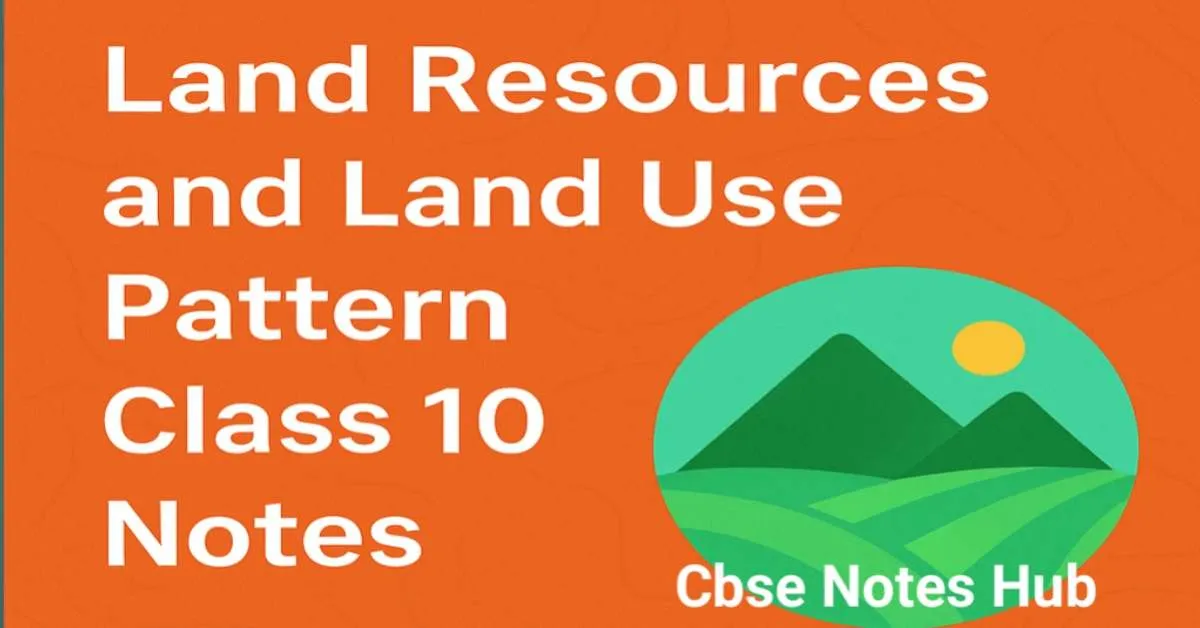This post helps to understand why resource conservation is necessary, Gandhiji’s views on the conservation of resources, and land resources and land-use pattern in India.
Resources and Development – Class 10 Geography Notes (Part 2)
Conservation of Resources
- Resources are vital for any developmental activity.
- Irrational consumption and over-utilisation of resources lead to socio-economic and environmental problems.
To Overcome These Problems
- Resource conservation at various levels is important.
Gandhiji’s Views on Conservation
- “There is enough for everybody’s need and not for anybody’s greed.”
- According to Gandhiji, selfish individuals and the exploitative nature of technology were the root causes of resource depletion.
- He was against mass production and favoured production by the masses.
Key Concepts and Reports
- Club of Rome (1968): Advocated resource conservation systematically at the international level.
- Gandhian Philosophy: Highlighted in the book “Small is Beautiful” by Schumacher.
- Brundtland Commission Report (1987): Introduced the concept of sustainable development; findings published in “Our Common Future.”
📘 Must Read:
📌 Resource and Development – Class 10 Notes (Part 1)
Land Resources
- Land is a natural resource that supports vegetation, wildlife, human life and economic activities.
- It also supports transport and communication systems.
- Land is finite; therefore, it must be used carefully and efficiently.
Land under Different Relief Features in India
- Mountains – 30%
- Plateaus – 27%
- Plains – 43%
- Islands – remaining area
Fallow Lands
- Current Fallow: Left uncultivated for one or less than one agricultural year.
- Other than Current Fallow: Left uncultivated for one to five years.
Net Sown Area
- Area sown more than once in an agricultural year.
- The total cropped area is known as the gross cropped area.
Land Use Pattern in India
- Land-use pattern depends on topography, climate, soil type, technology, and resource availability such as power and irrigation.
Land Utilisation
- Land resources are used for:
- Forest
- Land not available for cultivation (barren, wasteland, non-agricultural uses)
- Other uncultivated land – pastures, tree crops, culturable wasteland
- Fallow land
- Net sown area
General Land Use Categories (1960–61 and 2014–15)
| Category | 1960–61 (%) | 2014–15 (%) |
|---|---|---|
| Forest | 18.11 | 23.3 |
| Barren and uncultivable waste land | – | 5.5 |
| Area under non-agricultural use | 4.95 | 8.7 |
| Permanent pasture and grazing land | 4.71 | 3.3 |
| Area under miscellaneous tree crops and groves | 1.50 | 1.0 |
| Culturable waste land | 6.23 | 4.0 |
| Fallow other than current fallow | 3.50 | 3.6 |
| Current fallow | 3.73 | 4.9 |
| Net sown area | 46.26 | 45.5 |
- The pattern of net sown area varies by state:
- Punjab and Haryana – over 80% of total area.
- Arunachal Pradesh, Mizoram and Andaman & Nicobar Islands – below 10%.
- National Forest Policy (1952) target – 33% forest cover.
- Actual forest area (2014–15) – 23.3%.
Source: NCERT
📘 Also Read:
📌
Power Sharing in Belgium and Sri Lanka – Class 10 Notes
📌
Chapter – Development Class 10 Notes

